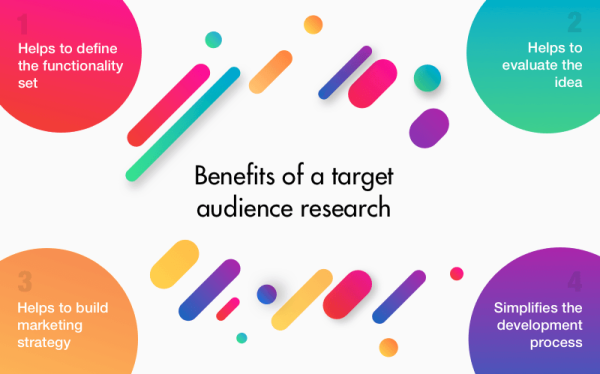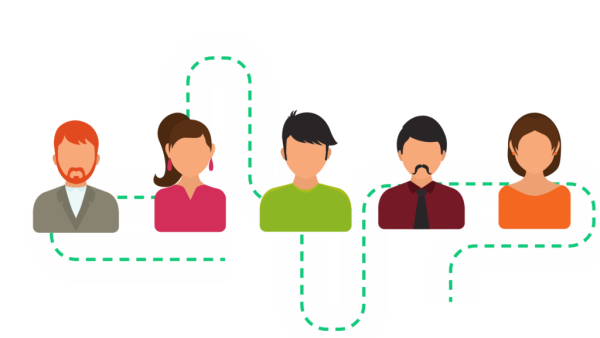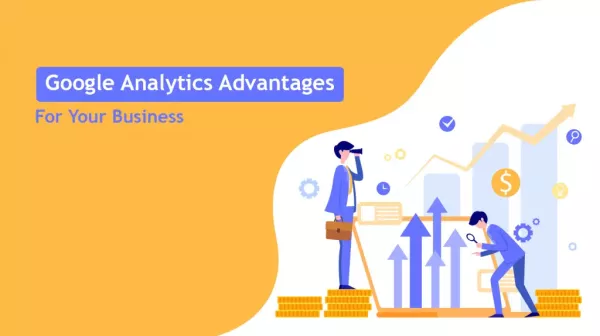Who Are Your Target Audience and How to Find Them?
One of the most crucial factors of a marketing strategy is knowing the correct target demographic for your company. Launching a new brand—product or service—involves significant risk. Understanding the market dynamics will assist you in reducing risk and focusing your brand advertising activities most cost-effectively possible.
“By focusing on building an audience first and defining products and services second, an entrepreneur can change the rules of the game and significantly increase the odds of financial and personal success… 1 Once a loyal audience is built—one that loves you and the information you send—you can, most likely, sell your audience anything.” - Joe Pulizzi
Strategies that are too broad, to begin with are less likely to succeed than those focused on a specific market segment. Therefore, before you start marketing your brand, you must first determine your target audience.2 It will be made up of both existing and potential clients. As per Databox’s newest survey findings, target audience research was useful with content marketing, social marketing, and SEO efforts.3
When you understand your target audience and their key points, you can better develop content and target adverts with the appropriate marketing message for each category. So, to assist you, let's define a target audience and the measures you may take to identify yours:
What Is Exactly a Target Audience?

They are the set of people who are most likely to purchase your service or product and, as a result, must notice your advertising campaigns. Age, gender, class, geography, interests, and various other criteria can all influence who your target audience is.
According to Marketing Evolution,4
“Every year, $37 billion is squandered on commercials that fail to reach the target audience.”
Your target audience might be broad or a niche depending on your industry. For example, if you were selling shoes, your target audience would be diverse because males, females, and kids all use shoes. Perhaps, on the other side, you focus on high-performance athletic shoes. Then your target market would be more specialised—elite athletes aged 20 to 40 who have shown enthusiasm for running or who have completed a marathon.
In either case, it’s critical to define and categorise your target demographic. So, you can figure out what kind of creative messaging would resonate with and which channels they favour. To simplify, here are some examples of a target audience:
- The target audience is a defined set of people.
- Men, women, adolescents, and children are all possible candidates.
- They usually have something in common, such as reading, cycling, or soccer.
- Advertisers might use personas to research appropriate magazine titles or trade publications.
The Advantage of Understanding Your Target Audience

Understanding your target audience is essential as a marketer.5
This data will define each marketing strategy and approach you implement. While running an ad during the Playoff Game may seem like a terrific method to get your message in front of as many customers as possible, it is also costly. Moreover, only a quarter of the people watching your video will be interested in what you're selling.
It’s critical to choose the correct medium for your marketing efforts if you want to see a return on your investment. Ads in running magazines, for example, may be a perfect choice for your target audience if you offer sports shoes. Knowing that your target audience wants a particular publication or views a specific show implies that fewer people will view your advertisement, but they might be appropriate.
According to Raven Creatives, 6
“Identifying your audience allows your business to focus marketing efforts and dollars on the groups that are most likely to buy from you.”
Knowing your target market enables you to create relationships and better engage with customers and enhance ROI.7 You can create content that appeals to specific profiles and brands that reflect the values and interests of those who are most likely to buy the product.
It is especially crucial when consumers demand that every ad be tailored and individualised. Besides, 80% of customers say they are more inclined to do business with a company that provides individualised service.
5 Ways to Find Out Your Target Audience

You must spend some time assessing data from consumer interactions, evaluating existing buyers and buying trends, and improving to define your target audience. The five strategies below should assist you in identifying your target audience: 8
1. Conduct Customer Interviews and Evaluate Your Client Base

Looking at who already purchased your service or product is one of the most acceptable ways to find out your target audience. What is their age, where do they live, and their hobbies? Engaging on social media or sending client surveys are fantastic ways to learn this.
“Businesses and researchers across all industries conduct surveys to uncover answers to specific, important questions.9 These questions are varied, cover a diverse range of topics, and can be asked in multiple formats.” - Susan E. DeFranzo
Rubkiewicz, for example, was recently surveyed to learn more about what their blog followers desired from their posts and mailings. They explored some of the most popular blog posts and were astounded to receive over 600 responses in three days. You can guess how many ideas they got from what content they should publish to stand out to their target market and convert them into leads.
2. Examine Your Competitors

Marketers may learn a lot from competitors by observing whom they sell to most frequently and how they do it. Do they want to target the decision-maker or the fan? Do they communicate through online or physical channels?
“The competitor to be feared is one who never bothers about you at all but goes on making his own business better and successful all the time.” - Henry Ford.10
The goal of evaluating your competitor is to understand your opponent’s strengths and shortcomings concerning your own and determine a market gap. It’s crucial to show you how to outperform your competitors in these areas to maintain your customers’ attention.
4. Build Buyer Personas

Personas are an excellent approach to better understanding the different groups that make up your target audience. Personas help you determine your target market’s overall demographics, characteristics and wants. It is beneficial if your product appeals to a broad range of customers. “Fran First-Time Runner” will cater to different requirements than “Sam Seasoned Pro.
According to ITSMA,11
“82% of companies using personas improved their value proposition.”
Marketers should create three to five personas, according to researchers. Personas are generated using data, surveys, digital interactions, and any other data available to marketers to provide a complete picture of their customers. Considered factors may include favourite activities, television shows, journals, and other stuff.
4. Define Who Isn't in Your Target Audience

Consumers will undoubtedly fall into your target category yet do not respond to marketing messages. Be as specific as possible when establishing who your audience is and who it isn't. Is your population made up of women or women aged 20 to 40? Knowing this will prevent your teams from wasting money on ad segments that aren't profitable.
You can quickly sell your products and services if you know who your target audience is and who isn’t. It is pointless to market sports shoes to people who aren’t athletes.
5. Take Advantage of Google Analytics

It provides a wealth of data about the people who visit your website. This data may be used to uncover critical insights, such as which channels your target audience is using or what content they're most interested in. It will let you create more data-driven choices during strategic media planning.
"Google Analytics allows you to track and understand your customer’s behavior, user experience, online content, device functionality and more."
When it comes to audience insights, marketers typically turn to Google Analytics first.12 Once you have this information, you can adapt your digital marketing campaigns appropriately or even expand out and target a new industry and demographics along the way. Your target audience isn’t necessarily who you think it is.
Take Away
Finally, the more you know about your target audience, the more you'll be able to align your marketing efforts and enhance ROI. Furthermore, determining your target audience can help you decide which methods to use to reach that group. It will improve the likelihood of their taking action.



